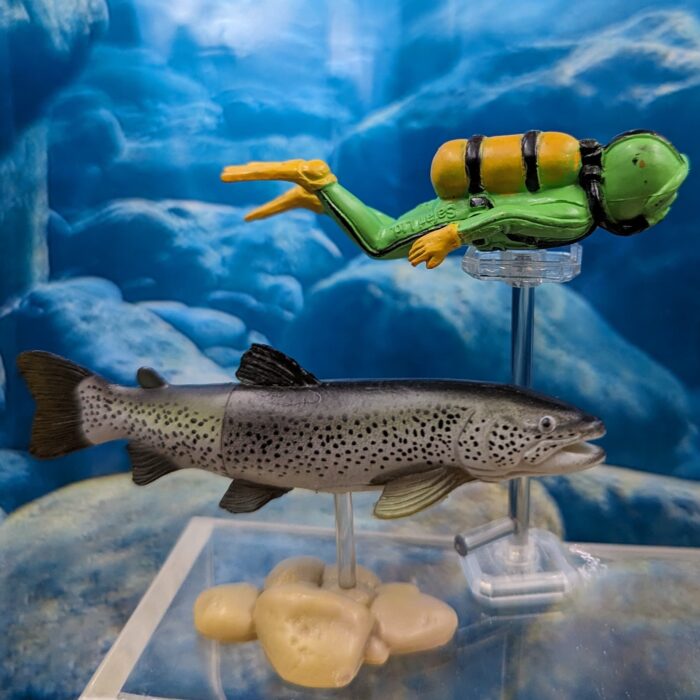This figure is the Japanese Huchen, also known as Sakhalin taimen, Parahucho perryi (apparently, renamed from Hucho), number 06 from the first series. This primitive member of the trout and salmon family is found in limited areas of the northwest Pacific—Hokkaido island in Japan, the Russian Sakhelin Island, and far-eastern portions of mainland Russia.
Moon Bear (Wild Safari Wildlife by Safari Ltd.)
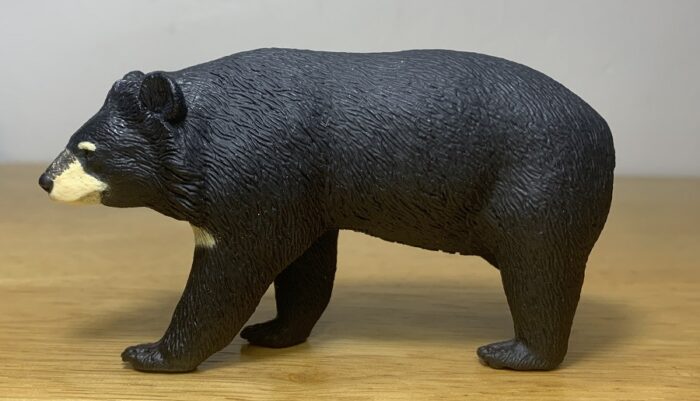
The moon bear (Ursus thibetanus), also known as the Asian black bear, gets its name from the white or cream colored crescent shaped marking on its chest. They’re found in Asia, stretching in a narrow band from southeast Iran across central Asia, and into southeast Asia, including China, Taiwan, far east Russia, North and South Korea, and Japan.
Cherry Salmon, breeding phase special figure (Freshwater Fish Pictorial Book, Series 1, revised release by Yujin)
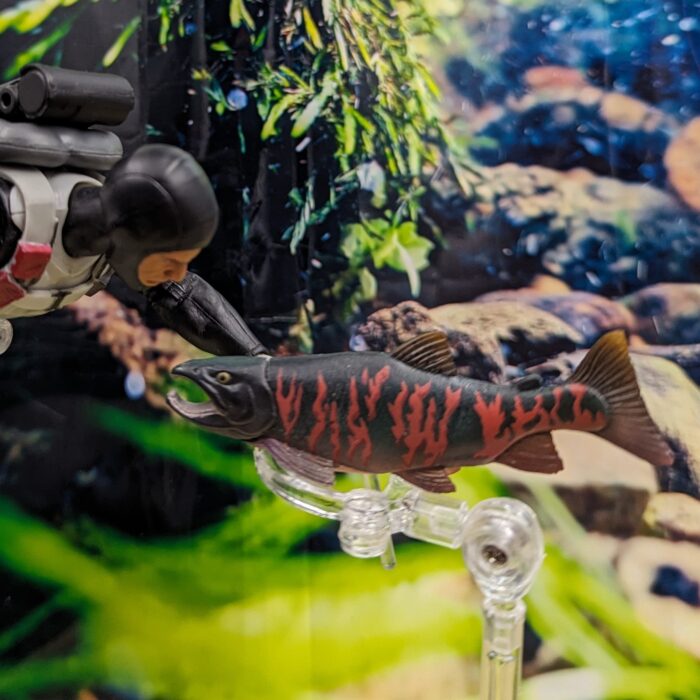
This figure is represents a breeding colour Cherry Salmon (or Masu Salmon), Oncorhynchus masou masou . It is stamped with a number 5—meaning that while this figure may share the name of figure 03 (the ‘normal’ cherry salmon, written about here) it is a re-paint of the Chum Salmon figure (posted here).
Bonobo, female (Wild Life Africa by Schleich)
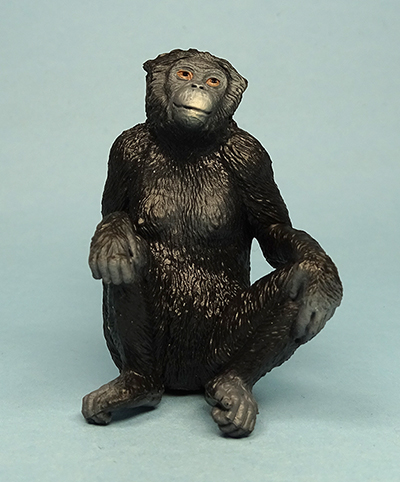
Review and images by stemturtle; edited by bmathison1972
Schleich released a lovely bonobo, Pan paniscus (Schleich Wild Life #14875), in 2024. This review will compare the figure to the chimpanzee, Pan troglodytes, instead of describing it in great detail. A former name, pygmy chimpanzee, was a mistake, since the bonobo is a separate species from the chimp.
Chum Salmon (Freshwater Fish Pictorial Book, Series 1, revised release by Yujin)
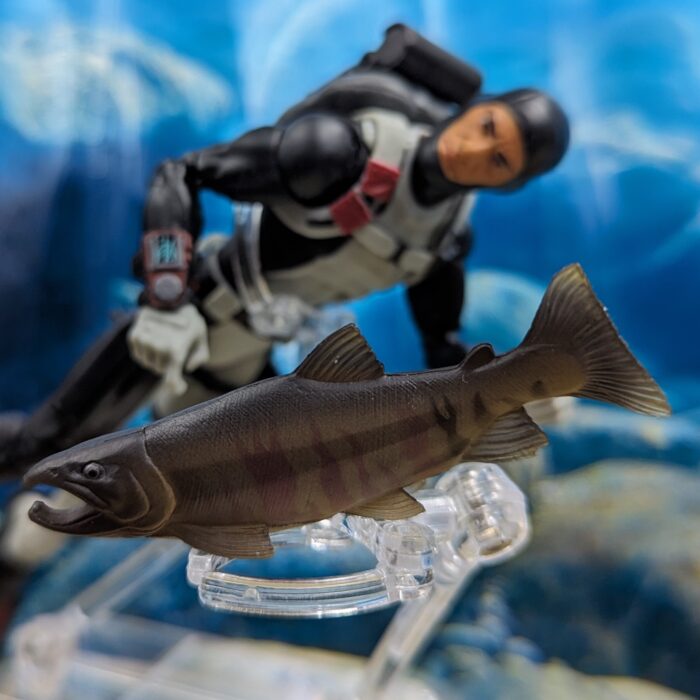
This figure is the adult Chum Salmon, also known as Dog Salmon or Keta salmon, Oncorhynchus keta, number 05 from the first series. This trout is widespread throughout Pacific Asia and North America, ranging widely in the oceans and travelling far inland for breeding. The Chum salmon is a very deep bodied salmon species.
Alpine Ibex, 2024 (Wild Life Europe by Schleich)
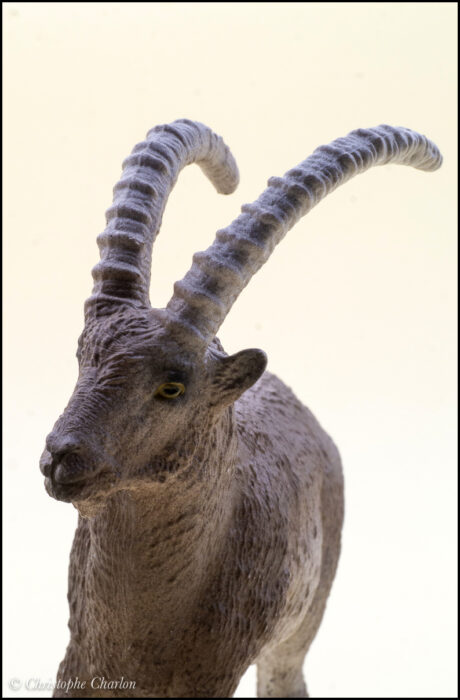
Review and images by Kikimalou; edited by bmathison1972
What about the new Alpine ibex proposed by Schleich for 2024?
The real Alpine ibex (Capra ibex) is a stocky animal with sturdy legs and a short, broad muzzle. The coat is dull and brownish over most of the body, lighter on the belly, with darker markings on the chin and throat.
Rainbow Trout (Freshwater Fish Pictorial Book, Series 1, revised by Yujin)
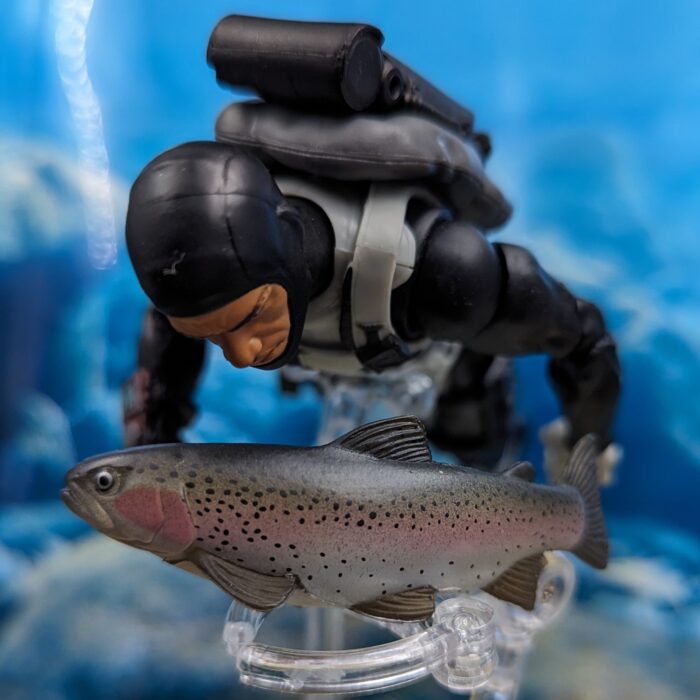
This figure is the Rainbow Trout, probably one of the most familiar North American game fish, Oncorhynchus mykiss, number 04 from the first series. This trout is widespread throughout North America, and parts of the Kamchatka peninsula; they are also introduced into many other places including, of course, Japan.
Cormorant (Marine Life by Papo)
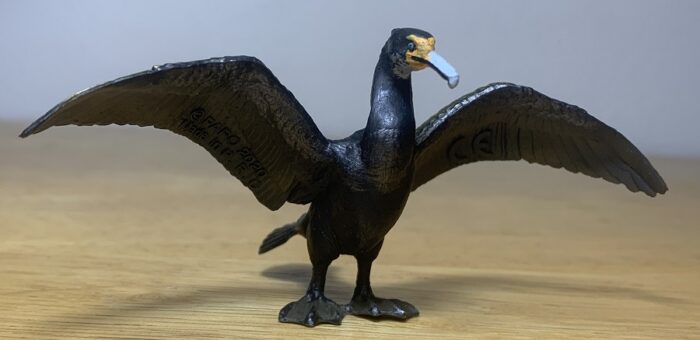
My recent review of the Safari blue-footed booby motivated me to review another Suliforme bird that I featured in a comparison photo in that review, the 2020 Papo cormorant, which is also my most recent acquisition.
Cormorants, along with shags, make up the Phalacrocoracidae family, made up of about 40 species.
Cherry Salmon (Freshwater Fish Pictorial Book, Series 1, original release AND revised release by Yujin)
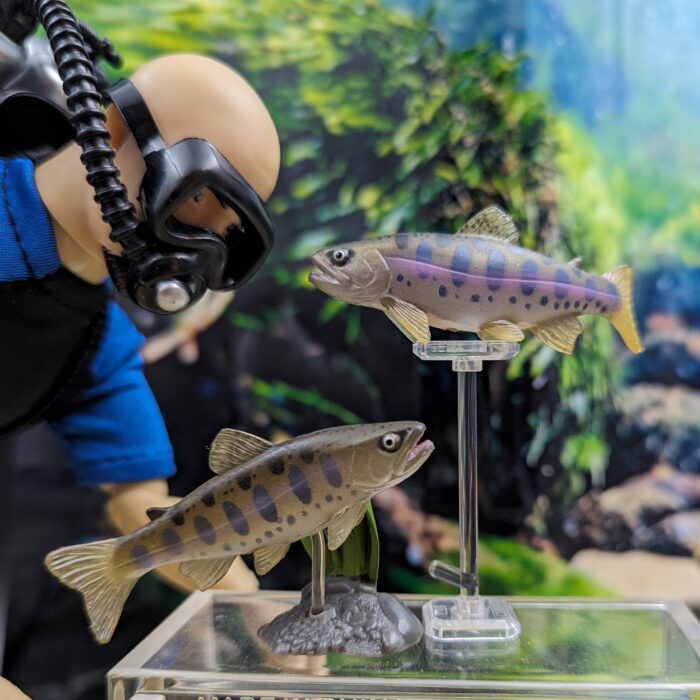
This figure is the Cherry Salmon (sakura masu in Japan, meaning cherry troug; the landlocked form is known as Yamame), Oncorhynchus masou masou, number 03 from the first series. This salmon is a widespread, anadromous subspecies found along the Pacific Coast in Japan and Korea. Not surprisingly, Cherry Salmon are fished commercially and as game fish.
Barn Owl (Wild Animals by Papo)
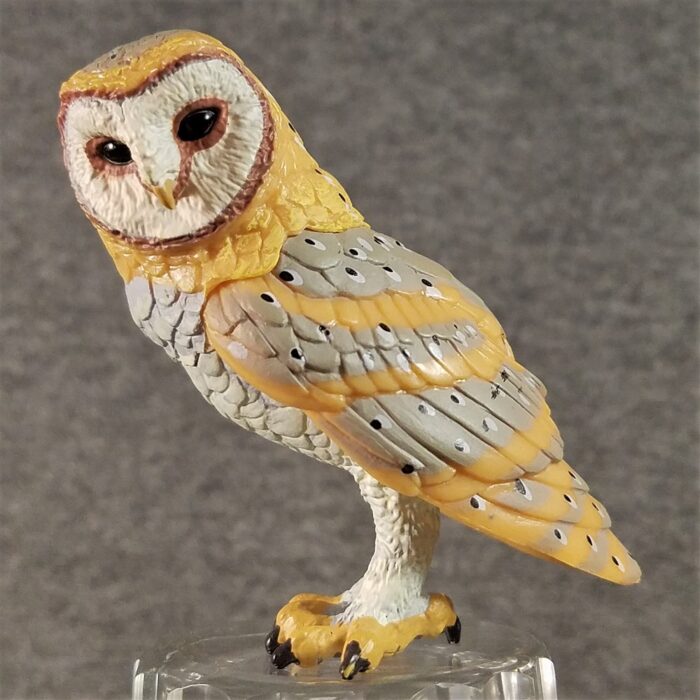
The barn owl is, in my opinion, one of the most beautiful birds of prey in the world. With its white, golden-ash plumage, and uncannily silent flight, there’s an otherworldly allure to these birds; undoubtedly this is why the bird is also nicknamed the ghost owl, and how it’s managed to spook many a farmer or unwary traveler throughout history.
Dolly Varden (Freshwater Fish Pictorial Book, Series 1, revised release by Yujin)
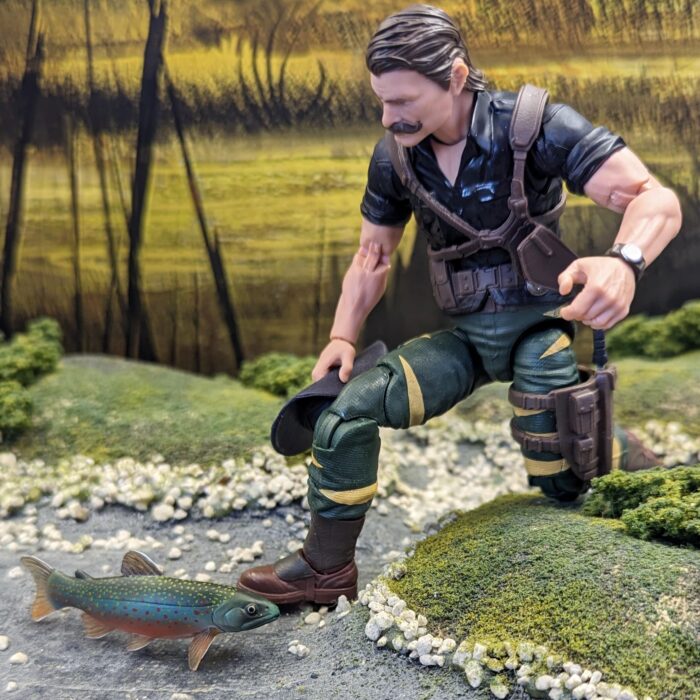
This figure is the Japanese Dolly Varden (also known as Miyabeiwana or Miyabe Char in Japan), Salvelinus malma miyabei, a Secret Figure from the first series revised release (so, the third release of series 1 for those keeping track). I believe it is numbered #17 in the set, although it is based on model #2.
White-spotted Char (Freshwater Fish Pictorial Book, Series 1, revised by Yujin)
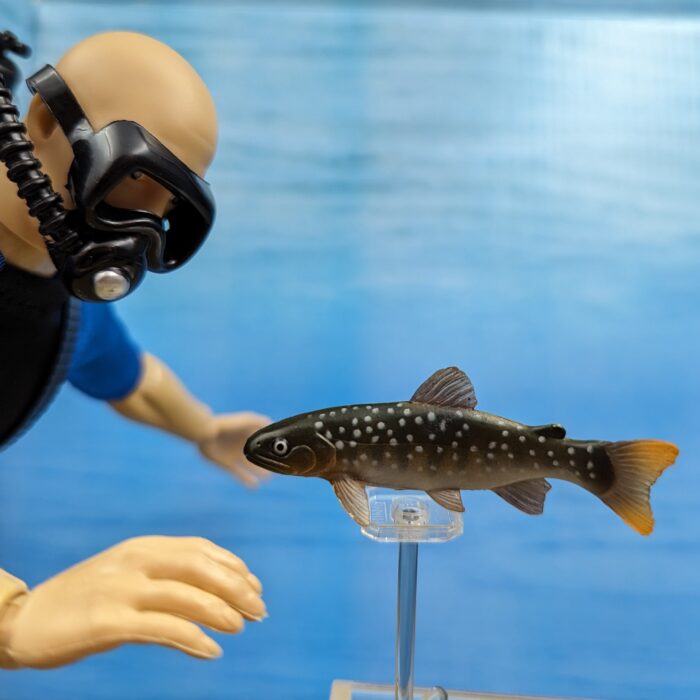
This figure is the White-spotted Char (also known as iwana in Japan), Salvelinus leucomaensis, number 02 from the first series. This salmon and trout relative is a fish found in East Asia, and can be landlocked or ocean-running. As with many Japanese fish models (though not all) it is widely fished for.

